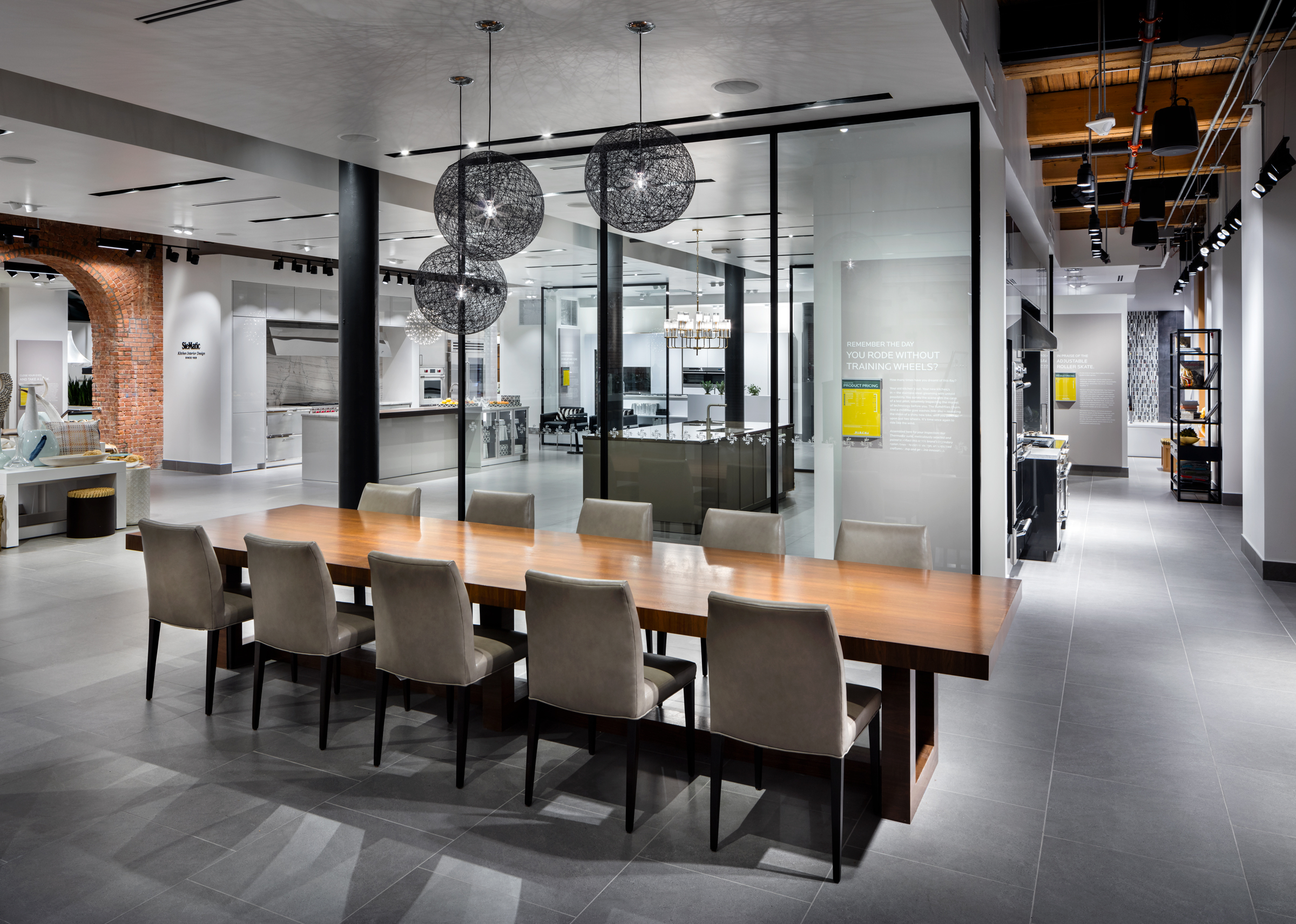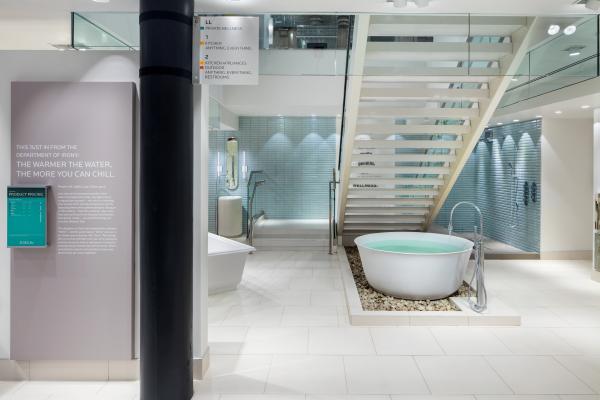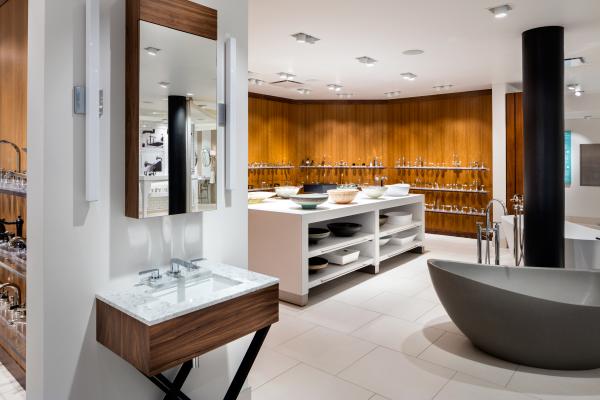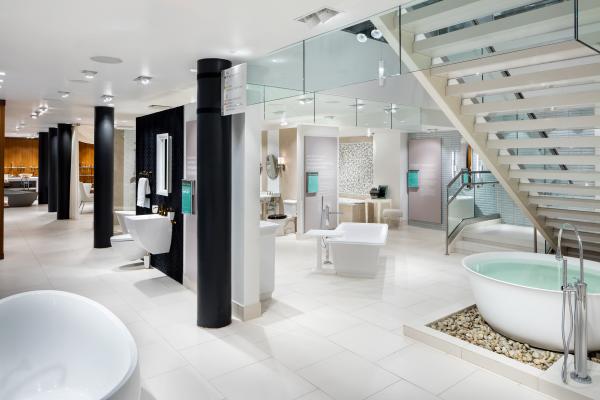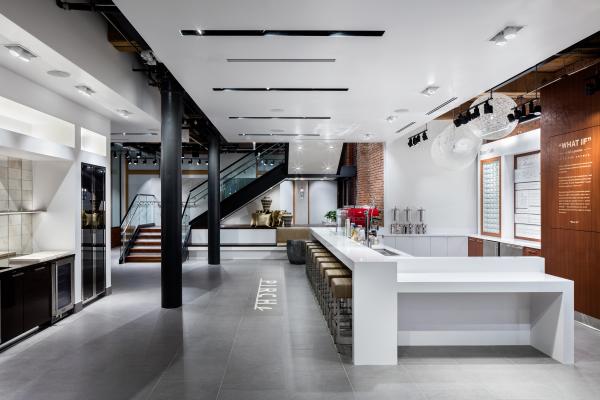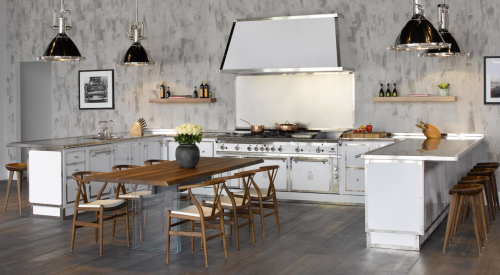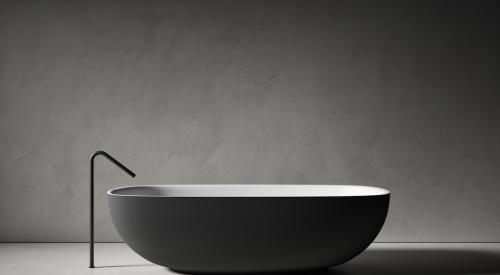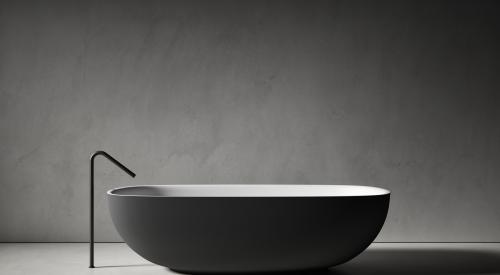Despite killer renderings, some buyers and clients can’t quite picture the kitchen or master bath you’ve designed. Or maybe you’ve seen photos of a new faucet collection, but aren’t sure if it would work in your project. Enter the experiential showroom.
The concept isn’t completely new; retail showrooms have given consumers the chance to hear a quiet dishwasher or run their hands over surface materials for years, but what’s changing is the “wow” factor.
The evolution is in the depth and breadth of the shopping experience. Aromatherapy, slick lighting, beautiful appointments, and even fine dining are offered in showrooms that often seem more like inviting living spaces than sales rooms.
They encourage guests to try before they buy, to turn on faucets, fire up ranges, test a surface material’s durability, and generally get a sense of how a product performs.
A 30,000-square-foot space in a former ironworks in NYC’s Soho neighborhood is Pirch’s newly opened flagship, joining eight other locations nationwide.
Open to the public and professionals, Pirch features top-shelf appliances and bathroom brands, in 30 interactive vignettes on three floors.
A mocked-up home spa, Sanctuary, holds nearly 40 showerheads from Kallista, Watermark Designs, Kohler, Rohl, Duravit, and others. Guests can test them, and even book a private steam shower.
A rotation of chefs staffs the live-demo Savor and Patio kitchens; complimentary cooking classes are offered.
Jeffery Sears, Pirch’s CEO and founder, says the most popular products offer the prospect of bringing the excitement of the user experience all the way home.
“I’d place steam convection, a Flamberge (open rotisserie), and Woodstone Hearth as top three in kitchen,” Sears says. The Evo (a large Mongolian grill) is a must for outdoors. “In the bath, any product that drives a sense of well-being, whether it be steam (Mr. Steam), aromatherapy lighting, or a Gessi massaging showerhead, [makes the cut].”
What’s appealing to designers and architects? Convenience, time management, and project efficiency.
“It goes well beyond the showroom experience,” Sears says. “(We have a depth of knowledge) that spans construction, design intent, customer experience, and, in the case of appliances, installation.”
Is there any concern that the showroom experience might overwhelm a client? Showroom reps say it all comes down to communication.
“Think of it this way: the worst thing that can happen to a builder, designer, architect, or specifier is to have a client job finish and then that client goes to another home, sees something spectacular, and asks, “Why was this not exposed to me?” Sears says.
“In the beginning, as we earn our clients' trust, the designer and architect will attend the working meetings with the homeowner or end user,” Sears continues. “Over time, our ability to cross communicate with the professional trade in real time allows for the professional to simply give us direction. “
It’s a similar business model over at Hansgrohe’s Axor brand in Manhattan’s design-forward Meatpacking District.
Axor’s 3,000-square-foot space showcases the luxury brand’s collections and features vignettes of Axor’s Citterio, Urquoia, and Starck Organic lines, among others.
Designers, architects, and consumers can spec out a project with a product specialist. In addition to a fully functioning kitchen and shower interactive, a state-of-the-art studio hosts seminars, demonstrations, and architects, designers, and industry speakers.
Amanda Mobley, Axor NYC’s design studio coordinator, says interaction with the product takes the client’s design appreciation and understanding to a new level. Professionals also often visit on their own, for personal projects and to better understand how products work.
“Aesthetics only mean so much when the performance isn’t there,” Mobley says. “Having the working shower display allows users to understand [product] performance and helps educate them on innovations.”
For example, Mobley points to Axor’s air-injection technology, where the shower stream is enriched with air to make the droplets plumper, softer, and lighter while still meeting flow regulations. Paper specs aren’t the same as running your hand through the water stream.
Cosentino has opened several centers around the country, with interactive surfacing material displays that allow buyers to test durability. And DuPont’s Corian Design Studio in New York provides a workspace for professionals to explore lighting, fabrication, and installation options when using the materials.
In August, Newport News, Va.-based kitchen and bath distributor Ferguson debuted a 13,000-square-foot showroom in Atlanta’s tony Buckhead neighborhood. It offers a shower wall, lighting lab, and working kitchen, where features like connectivity and induction cooking can be demoed.
This could be the showroom of the future.
